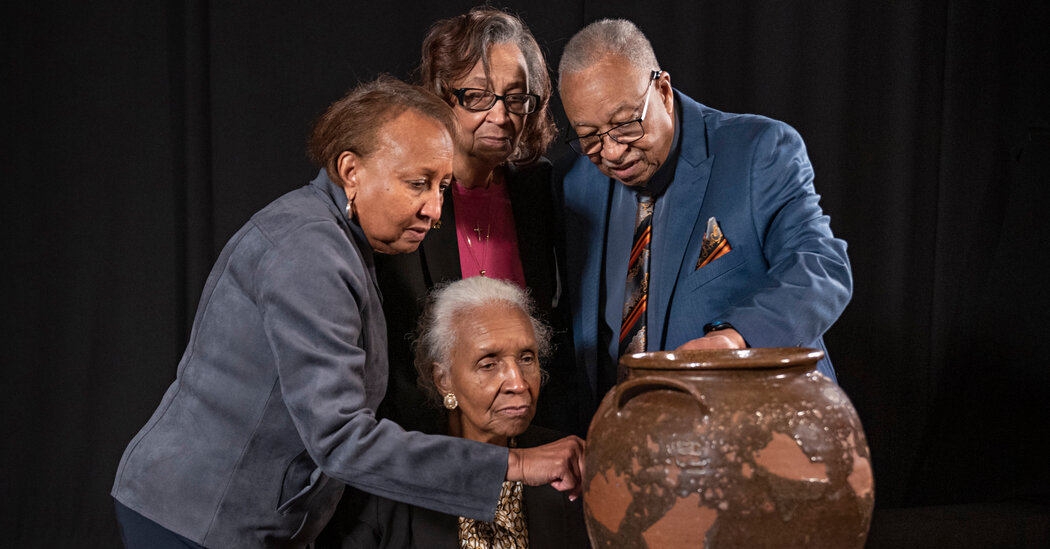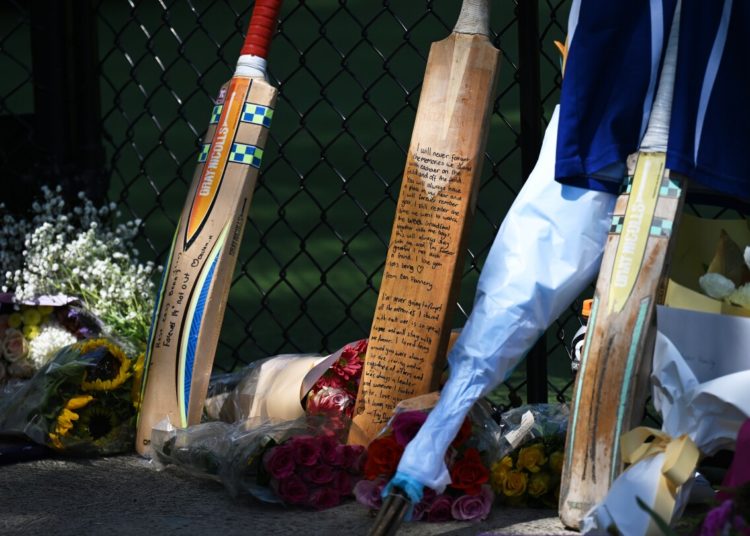In the 1800s, while enslaved in South Carolina, a man known as Dave the Potter worked as an artisan, making stoneware vessels for food storage. He inscribed his name, dates and poetic verses on the pots, an act of resistance at a time when it was a crime for him to read and write.
Over more than a century, the stoneware pottery has become a powerful representation of the artistic history of enslaved people. The pots made by Dave, who later became known as David Drake when he adopted the surname of his first enslaver after his emancipation, were sold at auctions and displayed in museums, including the Metropolitan Museum of Art, the International African American Museum, and the Museum of Fine Arts, Boston.
This week, the Boston museum announced its first restitution of artwork created by an enslaved person. The museum said that it had reached an agreement with Mr. Drake’s heirs to restore “ownership” of two vessels in its collection to the family. The vessels will continue to be on display — one is on loan from the family, and the other was purchased back by the museum.
The agreement means that, after more than a century, at least some of Mr. Drake’s many wares have been put back into the hands of his people.
“This marks the first time that the museum has resolved an ownership claim for works of art that were wrongfully taken under the conditions of slavery” in the 19th-century United States, the announcement said.
The museum said Mr. Drake had been “deprived of his creations involuntarily and without compensation.”
In a statement provided on Thursday, Pauline Baker, Mr. Drake’s great-great-great-granddaughter, said the museum had shown “outstanding moral, ethical and inspiring leadership with regard to this landmark act of restitution.”
George Fatheree, a lawyer for Mr. Drake’s heirs, called the agreement “groundbreaking.”
“This is the first time that principles of ethical restitution have been applied to works of art created by an enslaved African American,” he said on Thursday. “Until now, works created by enslaved African American artists have been completely absent from the dialogue about restitution.”
Victoria Reed, the museum’s curator for provenance, said in an interview on Thursday that the agreement was in line with the museum’s other restitution work, including art stolen by Nazis, pillaged from Benin and looted in Turkey.
”It is both unique and new, but also part of a larger context of museum restitution,” she said. “It is the first theft that we have addressed from the period of slavery.”
Recovering looted works of art, or tracing their rightful owners, has become a challenge for museums. Dr. Tonya Matthews, president and chief executive of the International African American Museum, said she hoped the agreement with Mr. Drake’s heirs would open doors to more resolutions, possibly through genealogy research.
“There are no laws or policies within our field which govern thoughtful repatriation of African American heritage artifacts, particularly when they are valuable,” she said. “I think that the key there is restorative relationships with the family.”
The Boston museum purchased Mr. Drake’s jars in 1997 and 2011. One was the “Signed Jar,” created while Dave, who was born about 1800 and died around 1870, was enslaved in the Stony Bluff Manufactory in the Edgefield District of South Carolina. It was sold to benefit his enslaver, Lewis Miles, along with the “Poem Jar,” which is engraved with the words: “I made this Jar = for cash/Though its called Lucre trash.”
In 2022, the museum and the Met organized an exhibition called “Hear Me Now: The Black Potters of Old Edgefield, South Carolina” to highlight Mr. Drake’s art. The museum held talks with his descendants while developing the exhibition, prompting discussions about ownership.
Mr. Fatheree, the lawyer, said they developed a way to honor the family as the beneficiary of Mr. Drake’s legacy while allowing the museum to be a steward. Part of their agreement meant the family provided the museum with a “certificate of ethical ownership” to distinguish it from other owners and museums that have his pieces but have never engaged with Mr. Drake’s descendants.
“It was important to the family that these works be seen by the public,” he said, calling it “art created through stolen labor.”
Ms. Baker, Mr. Drake’s descendant, said the museum had done “all it can to right that wrong.”
“Our great-great-great-grandfather never got to own one single piece of his own pottery or to pass them on to his children and grandchildren,” she said.
Christine Hauser is a Times reporter who writes breaking news stories, features and explainers.
The post Enslaved Potter’s Art, Displayed at Boston Museum, Returns to Heirs at Last appeared first on New York Times.




